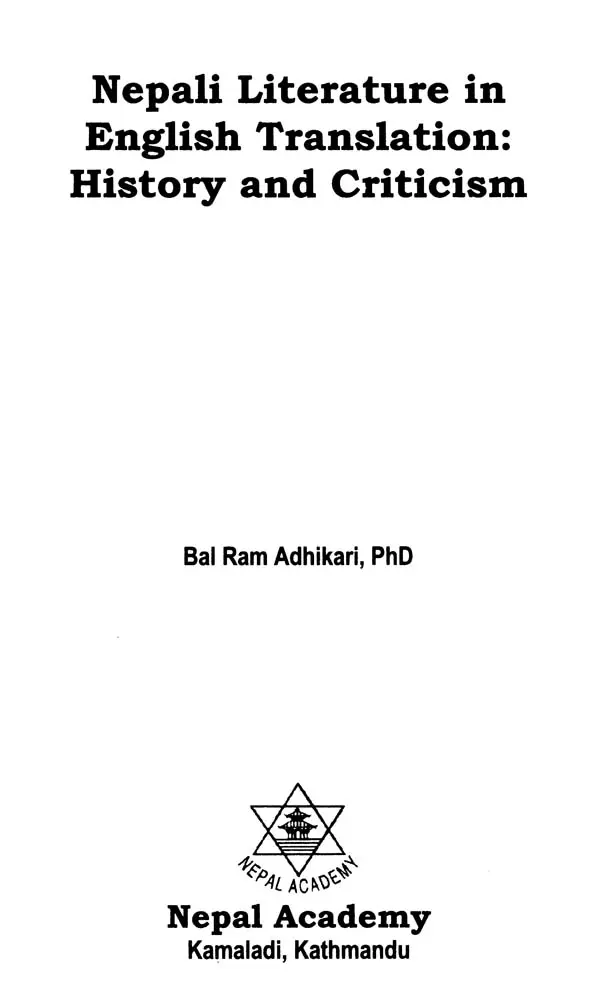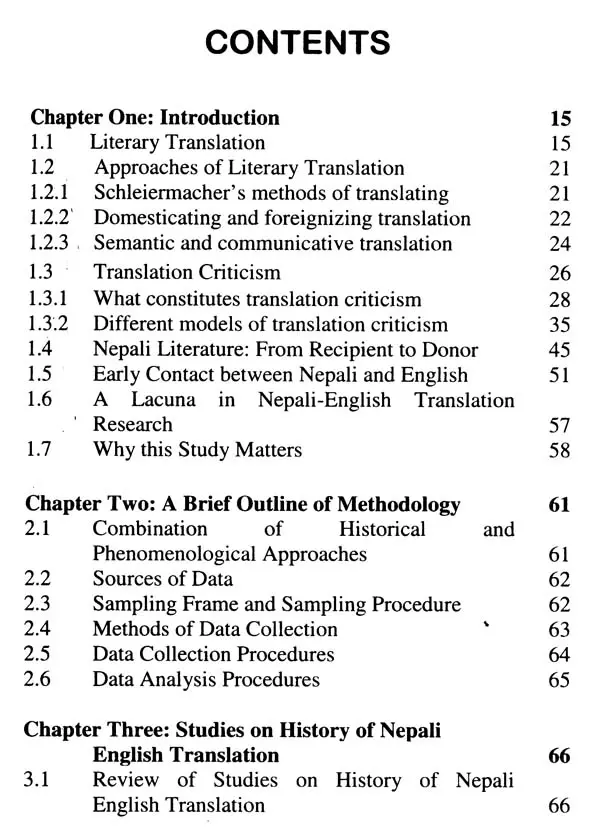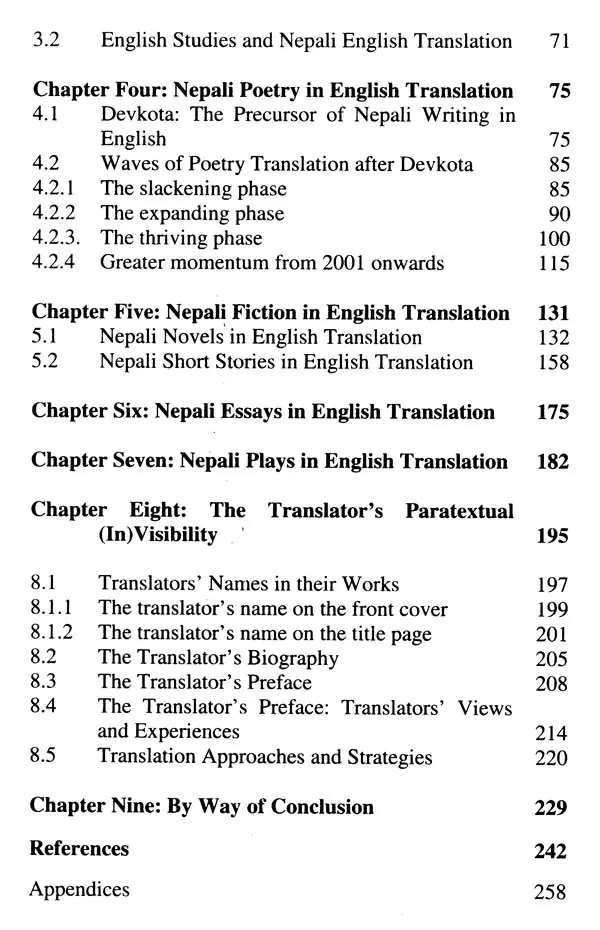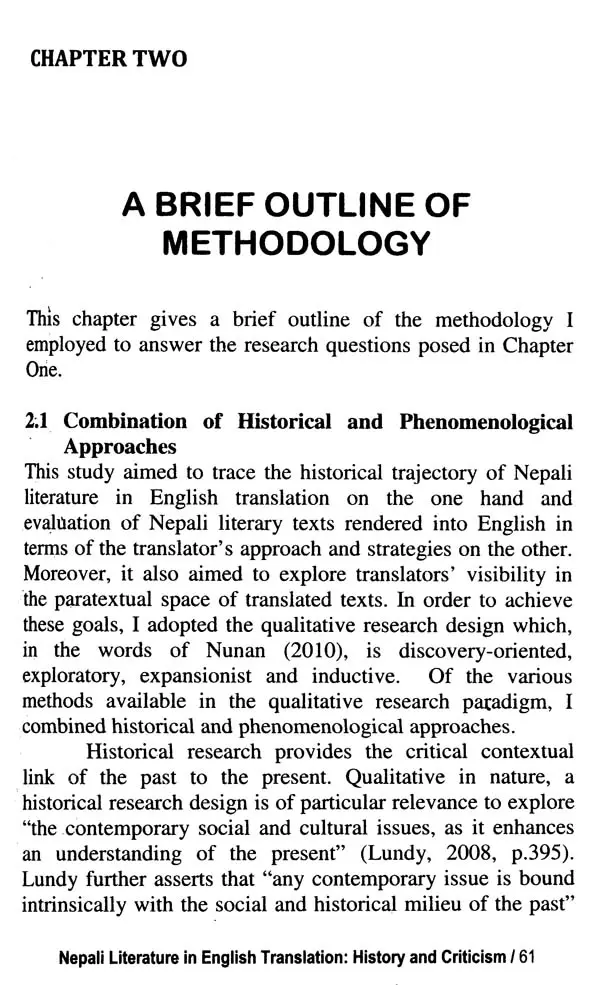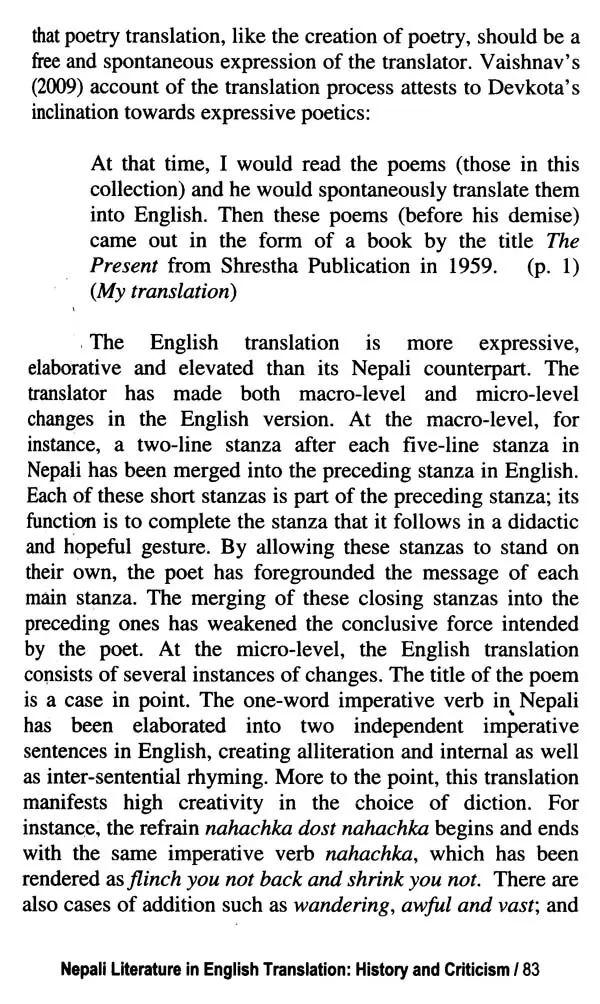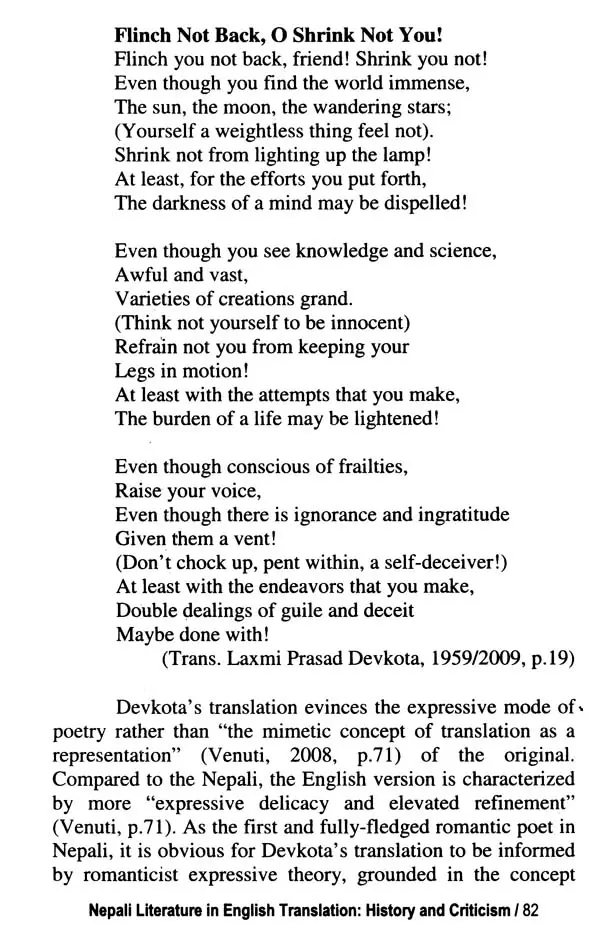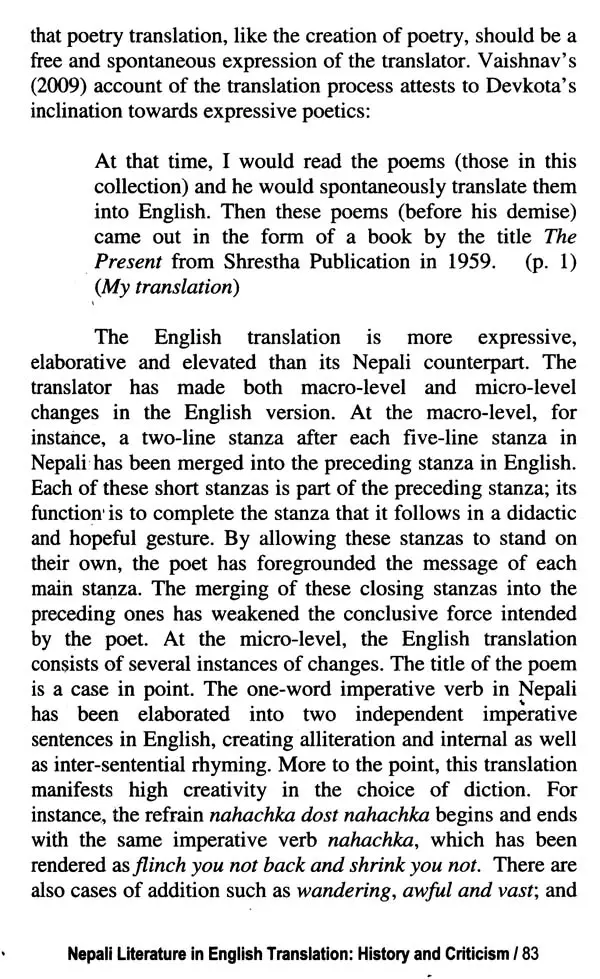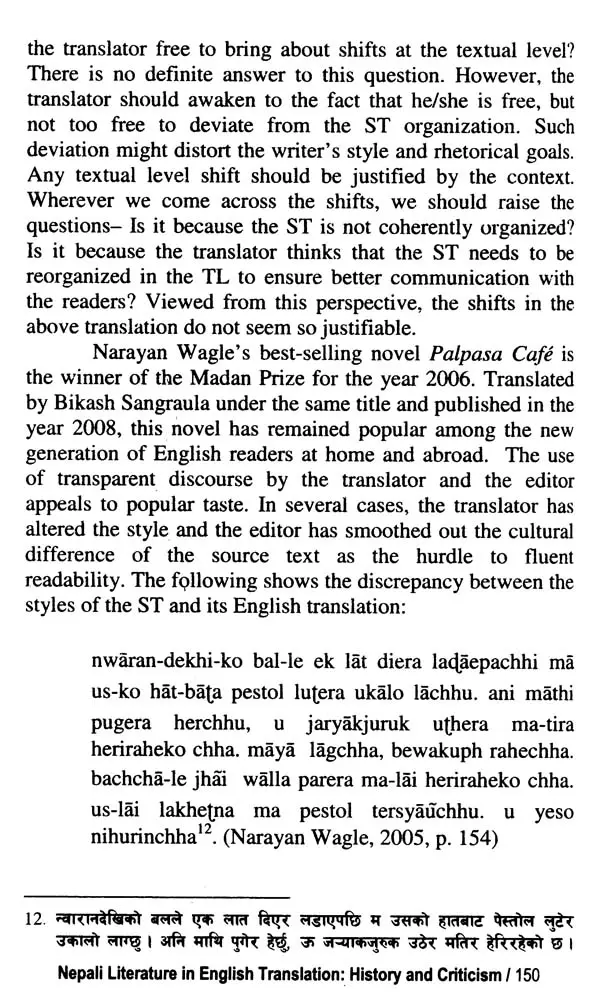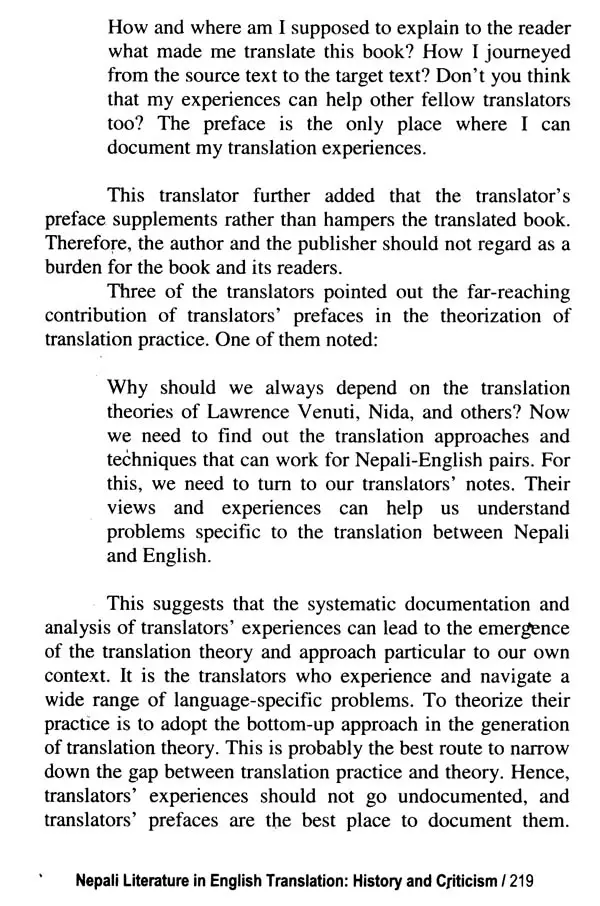
Nepali Literature in English Translation- History and Criticism
Book Specification
| Item Code: | UAG702 |
| Author: | Bal Ram Adhikari |
| Publisher: | NEPAL Academyn, Kathmandu |
| Language: | English |
| Edition: | 2021 |
| ISBN: | 9789937761376 |
| Pages: | 262 |
| Cover: | PAPERBACK |
| Other Details | 8.50 X 5.50 inch |
| Weight | 220 gm |
Book Description
Moreover, it also examines translators' visibility in their works. To achieve these goals, I primarily followed the historical approach to , understand the trends of Nepali English translation and examine translation approaches and strategies.
Moreover, I also employed the phenomenological approach to explore translators' views on their visibility in their works. Nepali literary texts in English translation and Nepali English translators constituted the primary sources of textual and oral data.' The data collected from the purposively selected samples were analyzed qualitatively.
Findings reveal that poetry is the most translated genre, whereas play and essay are the least prioritized ones by Nepali English translators. The translation of fiction lies in Between them. The historical survey shows the gradual decrease in the involvement of foreign translators in the translation of Nepali literature into English.
Nepali English translation activity is almost exclusively dominated by Nepali English bilinguals. Despite having variation in individual predilections for translation approaches and strategies, close translation taking care of target English readers appears to be the preferred mode for Nepali English translators. The retention of source cultural words in English texts, use of footnotes and glossary, and literal translation are dominant strategies employed to register linguistic and cultural differences encoded in Nepali texts. So far as translators' visibility is concerned, Nepali English translators have a satisfactory level of visibility in their works compared to the international practice. Mentioning translators' names on the front cover and/or title page, featuring their biographies, and incorporating translation prefaces are the major par textual strategies of ensuring translators' visibility in their works. For an opportunity to carry out this research, I am grateful to Chancellor Ganga Prasad Upreti, Vice-Chancellor Dr. Jagman Gurung, Member Secretary Prof. Jagat Prasad Upadhyaya, and Prof. Dr. Usha Thakur, Head of Department of Translation, Nepal Academy. I am indebted to Prof. Dr. Govinda Raj Bhattarai for his relentless academic guidance and moral support from the inception of this study to its final form. My sincere gratitude goes to Prof. Dr. Abhi Subedi and Prof. Dr. Krishna Chandra Sharma for their encouragement.
Also, I am thankful to translators Dr. Nabaraj Neupane, Mahesh Paudyal, Suresh Hachekali, Harish Adhikari, and Tek Narayan Dhakal, for sharing their valuable views and experiences about translation, as well as Basanta Agyat and Ranjan Ghimire for their kind cooperation during the publication of this book. Finally, I am indebted to all the writers and translators whose works I have used in this study.
1.1 Literary Translation In its broadest sense, literary translation is the translation of literary genres. From the genre perspective, texts and their translations are broadly characterized into two categories:
literary and non-literary. The distinction between literary and Irion-literary genres, however, should be treated with caution, for most of the features cut across genres (Reiss, 197112012; .. Snell-Hornsby, 1990). Reiss's framework, for instance, positions expressive texts such as poems, plays, and informative texts and operative texts on the same cline. This, however, does not rule out the fact that literature is a distinct .genre, i.e., a particular type of writing that exploits everyday language for aesthetic purposes. It stands out from other genres of writing from the perspectives of language use, content, function, and values associated with it, and the positionality of the subject involved in its composition. Jones (2009) succinctly summarizes the key features of literary texts as: They enjoy high social prestige; they typically aim to provoke emotions and/or entertain rather than influence or inform; they have no real-world truth- value: they are judged as fictional, whether fact-based or not; they may demand extra reading or listening effort by audiences, but deliver messages or experiences beyond the commonplace. In addition, their meanings may be ambiguous and/or indeterminable, and they may use poetic language that privileges language form, as in the case of wordplay or rhyme; they are characterized by heteroglossia, depicting different voices with different viewpoints.
Book's Contents and Sample Pages
